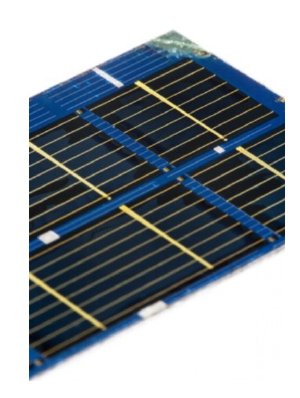Sep 21 2009
At the European Photovoltaic Solar Energy Conference (Hamburg, Germany), IMEC presents a mechanically-stacked GaAs - Ge multijunction solar cell. This is the first promising demonstrator of IMEC's novel technology to produce mechanically stacked, high-efficiency multijunction solar cells, aiming at efficiencies above 40 percent.
 IMEC's mechanically stacked GaAs/Ge cell
IMEC's mechanically stacked GaAs/Ge cell
At the top of the stack is a one-side contacted GaAs top cell that is only 4µm thick and that is transparent for infrared light. Its efficiency is 23.4%, which is close to the efficiency of standard GaAs cells. IMEC has succeeded in transferring this GaAs top cell onto a Ge bottom cell, creating a mechanical stack. In that stack, the Ge bottom cell is separately contacted. It has a potential efficiency of 3-3.5%, which is higher than Ge bottom cells in state-of-the-art monolithically stacked InGaP/(In)GaAs/Ge cells. Looking forward, Giovanni Flamand, team manager at IMEC, expects to show a first working triple-junction cell beginning of 2010.
This cell is a demonstrator of IMEC's innovative technology to produce mechanically stacked, high-efficiency InGaP/GaAs/Ge triple-junction solar cells. This includes manufacturing world-class thin-film III-V cells and Ge bottom cells, and developing a technology to mechanically stack them. The expected conversion efficiencies are 1-2% higher than those obtained today with monolithic triple-junction solar cells (> 40% with concentrated illumination). In addition, the new cells show an enhanced spectral robustness. Stacked solar cells combine cells made from different materials to capture and converse a larger part of the light spectrum than is possible with a single material.
Dr. Jef Poortmans, IMEC's Photovoltaics Program Director: "Mechanical stacks are more complex to handle and interconnect. But they definitely offer a way to increase the conversion efficiency and energy yield of high-efficiency solar cells. And they also enable an efficient way to try and use new combinations of materials. For this technology, we profit from IMEC's expertise in 3D stacking, growing III-V layers, and solar cell processing."